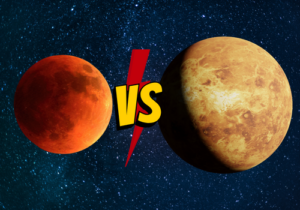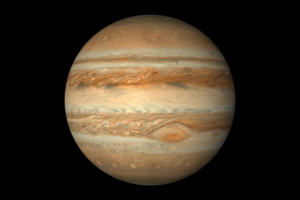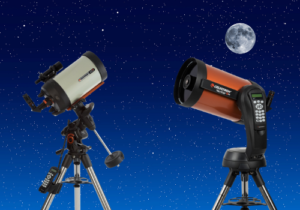How To Clean a Telescope Lens, Mirrors & Eyepieces
Disclosure: This post contains affiliate links and I may earn a small commission (at no extra cost to you) if you click through and make a purchase. Thanks in advance – I really appreciate it!
Before I can tell you how to clean your telescope’s lens, mirrors and eyepieces, I must give you a fair warning.
Only when it is necessary should the optics of a telescope be cleaned. If there are only a few visible specks of dust on your scope’s lens or mirror, you do not need to clean them. The special coatings on mirrors and lenses can be damaged and aged prematurely if they are cleaned excessively frequently or with excessive force, which will permanently reduce the performance of the mirrors and lenses.
So, I tell all my friends to clean their telescopes only when the optics are truly dusty or dirty. The best thing to do is to clean only as much as you need, begin by cleaning gently and then progress to more thorough cleaning.
Needless to say, you must clean the telescope’s outside optical surfaces first before even thinking about disassembling your scope and cleaning inner surfaces.
Trust me, a little bit of dust on your telescope optics makes absolutely no difference in the overall performance of your telescope.
In his book ‘Star Testing Astronomical Telescopes,’ Harold Richard Suiter concludes that “The maximum amount of dirt should tolerate on the telescope optics is about 1/1000 of the surface area, the size of a single obstruction about 1/30 of the diameter.”
In other words, on a 10-inch-diameter telescope mirror, you can have as much dirt as in a completely opaque blot a third of an inch across. That seems like a lot of dust that does no harm at all, isn’t it?
But if things get really dirty and you decide a cleaning has to be done, In this article, I’m going to walk you through the safest and most effective way of cleaning lenses, mirrors, and eyepieces one by one.
How To Clean a Telescope Lens
Even though cleaning the lenses of your telescope is a job that requires time, care, and a good cleaning kit (like Orion Deluxe 6-Piece Optics Cleaning Kit from Amazon), it is still possible to clean your telescope lenses at home in a way that is both thorough and safe.
Prices pulled from the Amazon Product Advertising API on:
Product prices and availability are accurate as of the date/time indicated and are subject to change. Any price and availability information displayed on [relevant Amazon Site(s), as applicable] at the time of purchase will apply to the purchase of this product.
Step1: Remove loose dust from the lenses.
If you skip this step and go straight to scrubbing and wiping the lens, you risk scratching the coating on the lens or even the lens itself from the very tiny dust particles. Therefore, it is essential to remove any loose dust particles first.
Don’t blow the dust away with your breath!
You might get tempted to just blow away the dust but do not do it.
Your breath contains a lot of moisture, and getting spit on your telescope lens can permanently damage it.
Suck the dust off!
The quicker and easier way to dust eyepieces is to suck the air and dust off the lens. Cover the end of your telescope above the lens with your fingers and suck in air from one side.
This removes the dust from your telescope optics to your lungs.
Fortunately, there are a few better techniques that do not involve using your lungs to gather dust.
Use a camel hair brush to remove dust from optics.
Another method for clearing dust from the telescope’s lens is to use a brush made of camel hair and give it a light brush.
These brushes have gentle bristles and a low propensity to scratch a lens, and they can be purchased at stores that sell cameras.
It is important to store the brush in a bag when it is not being used so that it does not become contaminated with dust from previous uses.
After you have finished using the brush, it is a good idea to run it through the air blower to remove any dust that may have accumulated on it.
Use a manual air blower to remove dust from telescope optics.
Alternatively, you can also purchase an optical cleaning kit, like this one, from Amazon.
This optical cleaning kit comes with an air blower to blow the dust off your telescope lens.
The air blower has a bulb on one end and a nozzle on the other.
When you squeeze the bulb, it draws in clean air at one end and then expels it as a jet through the nozzle end, and that’s how it blows away the dust off your telescope optics.
To effectively remove all of the dust from your lens, it is recommended that you combine the step of brushing with the step of using the air blower.
Step 2: Use cotton/microfibre cloth to clean the optics.
If you’ve followed the instructions in the previous step, then all the dust must have gone from your telescope, and it might be a good time to stop cleaning your telescope.
If you notice any fingerprints or eyelash oil on your lenses, only then should you continue cleaning with the lens solution and microfibre cloth.
The cleaning kit I mentioned before comes with an isopropyl alcohol solution for tougher dirt or stains on telescope optics.
First, use the dry microfibre cloth to gently rub the surface of your lens. If there’s still oil or a water spot, fog the lens with your breath and repeat the same gentle rubbing.
If this step has cleaned your telescope optics up to your satisfaction, then you must stop cleaning.
However, the optics may require further cleaning if they appear hazy, have fingerprints, or have a buildup of pollens, tree resins, grease, makeup, food, etc.
Step 3: Use lens cleaning fluid to clean the telescope optics.
Remember: Before attempting to clean an optical surface with a liquid solution, it is very important that as much dust as possible is removed by using forced air and/or gentle strokes with a camel hairbrush.
To further clean the lenses, apply the cleaning solution to the cloth/cotton rather than directly to the lens itself.
Be careful that the liquid does not seep in around the lens’s edges, as this could cause it to carry dissolved dirt to the glass surfaces inside the lens, which would then leave stains in areas that you could not reach.
When using microfibre cloth or cotton, use short, gentle strokes. Don’t apply pressure, just let it touch the surface and wipe in a straight line, don’t make circular motions.
After each stroke, replace the piece of tissue or cotton or use an unused surface with each stroke.
This way, you remove contaminants instead of just spreading them over the optical surfaces.
Next, use a dry part of the cloth, and following the path you have just taken, remove any excess lens cleaning fluid from the glass.
If there are no other contaminants on the optical surfaces, you will see the optics come clean and dry. If you see streaks or smudges, repeat the procedure.
How To Clean the Mirrors of a Reflector Telescope
So till now, I have given you a step-by-step guide to cleaning the lens of your telescope, but what about its mirrors?
Before I can tell you how to clean the mirrors of your reflector, I must give you another warning.
Try cleaning your reflector’s mirrors only if you’re confident about taking the telescope apart and putting it back together again and also about collimating the telescope once it’s reassembled.
This is something that you shouldn’t do lightly, so only commit to it if your mirrors are really dirty. In my opinion, just leave the mirrors alone unless they are seriously dirty.
If you decide to clean your telescope mirrors, here’s the procedure.
Step 1: Unscrew the screws that attach the main mirror’s cells to the end of the telescope tube. Reach in the back and gently pull out the cell with the mirror inside it.
Step 2: Unscrew the clips holding the mirror in place, and then carefully pull the mirror out from behind it, taking care not to touch its reflective surface.
Step 3: Remove the holder holding the small secondary mirror in the front of the tube, and then remove the mirror itself from its holder.
Step 4: You’ll need to get rid of all the grit and dust on your mirrors, but without rubbing. To do this, head to your kitchen sink.
Step 5: Clean the kitchen sink and lay a folded towel on the bottom.
Step 6: Put the mirror on the towel with its shiny surface facing up.
Step 7: Wash with room-temperature water using mild water pressure on the mirror’s surface for a few minutes. This will remove most dust and grit safely.
Step 8: If dirt is still present, give the mirror a light swipe with clean cotton dipped in lukewarm water and detergent.
Step 9: Give the mirror a final rinse with distilled water. This will leave no mineral deposits when it dries. Stand the mirror on the edge and let it dry.
What To Do if the Telescope Mirror is Still Dirty?
If you notice there are still some stains and oil on the mirror, you may need to soak the mirrors for some time. Here’s how to do it.
Step1: Plug the sink, put the mirror back on the towel, and fill the sink halfway with lukewarm water.
Step 2: Add some gentle liquid detergent and let the mirror sit in the water for up to 10 minutes.
Step 3: After the mirror has been soaked for some time, use a cotton ball and gently swab the mirror in one direction without putting too much pressure on it.
Step 4: Drain the sink, then run lukewarm water over the mirror to clean it. After you are finished, give the mirror one final rinsing with distilled water, and then stand it on its edge to dry. Follow the same cleaning procedure for the smaller secondary mirror.
How To Clean Telescope Eyepieces
If your telescope’s eyepieces are dirty, you won’t be able to see as well through it.
Fortunately, cleaning your eyepieces is very similar to cleaning your telescope lenses.
You will need the same cleaning kit that I mentioned before. It makes life easier, as you can quickly put your hands on all the items you need to clean your eyepiece optics.
Here’s how to do it:
Step 1: Use the bulb air blower to blow away loose dust particles from the surface of your eyepiece.
Step 2: Use the camel hair brush to gently remove dust or dirt from the lens.
Step 3: Look for smudges, fingerprints, oil, or goop on your eyepiece.
Step 4: If you find any tough stain or smudge on your eyepiece, you can clean it with the cleaning solution and cotton.
Step 5: Lightly moisten the cotton with the cleaning solution. Don’t overdo this. Too much solution may pool with the goop collected in the eyepiece itself.
Step 6: Start cleaning in the center and lightly wipe the lens with the moist cotton in a circular motion until you reach its outside edge.
Step 7: Wipe away the excess solution with dry cotton and repeat the previous and this step.
Step 8: Use a microfiber cloth to gently clean the surface of the eyepiece to remove any debris.
Step 9: Use either water or alcohol to clean the exterior of the eyepiece, being sure to wipe it off thoroughly.
Step 10: Allow everything to dry for at least 30 minutes before using or storing them.
More Tips To Clean Telescope Optics
- Avoid using household cleansers since they might include compounds that are harmful to the lenses and the eyepiece.
- Avoid using acetone and other alcohol-based solutions that contain additives like nail polish remover and rubbing alcohol since they have the potential to destroy the protective coatings on lenses.
- Do not attempt to remove dust from the lens by blowing on it with your mouth because this may cause moisture droplets to form on the lens.
- Don’t touch the lens with your fingers to keep oils and dirt from your skin from getting on the lens.
- Don’t put the cleaning solution straight on the lens – always put some solution on a cloth first.
- If you want to clean your telescope’s eyepieces, don’t use tap water because it can leave mineral deposits. Instead, use demineralized, distilled, or RO water.
- When cleaning the lens, you should avoid using paper towels or facial tissues because they will leave lint behind.
- Don’t clean and rub your telescope optics with too much pressure – It won’t pick up more dirt and debris and increases the risk of wearing away the coatings.
- If the optics don’t appear dirty, there’s no need to clean them. Because of this, the possibility of accidentally scratching them will be reduced.
- It is not a good idea to store your telescope in a damp, humid location that is likely to encourage the formation of mold or in a location where it could be damaged by being knocked over or by other objects.
Here’s a video that demonstrates the proper methods and techniques for cleaning telescope eyepieces and lenses.
How To Prevent Telescope Optics From Getting Dirty
If you want to avoid the optics of your telescope becoming dirty in the future, the best thing you can do is make sure that you keep the lens cap on it at all times when you’re not using the telescope.
This will prevent dust and grit from getting onto the lens, which would otherwise cause distortions in the image of the night sky you see.
It is vitally important that you do not touch the lens or mirror surface of the telescope at any time while using it. This is because the oils produced by your skin can cause the optical coatings to deteriorate over time.
If you accidentally touch the surface and end up leaving a fingerprint behind, make sure to remove it as soon as possible by using the remedies that were discussed earlier.
If there are only a few dust particles on the lens of your telescope, you shouldn’t worry about them too much unless there are a lot of them.
This is something to keep in mind. It is in your best interest to leave a little dust alone because it will not obstruct your views of the sky.
Conclusion
The mere presence of dust on the lens or mirror of your telescope is enough to cause you concern about the telescope’s deteriorating quality.
However, as I’ve shown in this article, you shouldn’t worry too much about a tiny bit of dust because it won’t affect your overall viewing experience.
If your lens or mirror has more than a little bit of dust on it, or if it has any other blemishes, then you should clean it by following the methods that we have detailed in this article.
Taking your time and moving carefully through each cleaning step is the most important thing to accomplish. When it comes to the proper way to clean the mirror and lens of a telescope, it is essential to handle both components with extreme care!
Sources
Written by:

Kavya Joshi
My love affair with space began in a field in India at the age of 7, when I looked up at the Milky Way for the first time. Ever since, I have been attempting to cram in every fact about the Universe, I can find into my head.
ABOUT US
We are a team of active amateur astronomers, here to help you with all your astronomy and science related needs – this is anything, from reviewing the latest telescopes to be released to talking about gravity and neurons. The Big Bang Optics was started because of our love for astronomy and to help others like us find the best telescope and accessories.
LEGAL DISCLAIMER
The Big Bang Optics is a participant in the Amazon Services LLC Associates Program, an affiliate advertising program designed to provide a means for sites to earn advertising fees by advertising and linking to Amazon.com. The Big Bang Optics also participates in affiliate programs with Clickbank and other sites. The Big Bang Optics is compensated for referring traffic and business to these companies.





